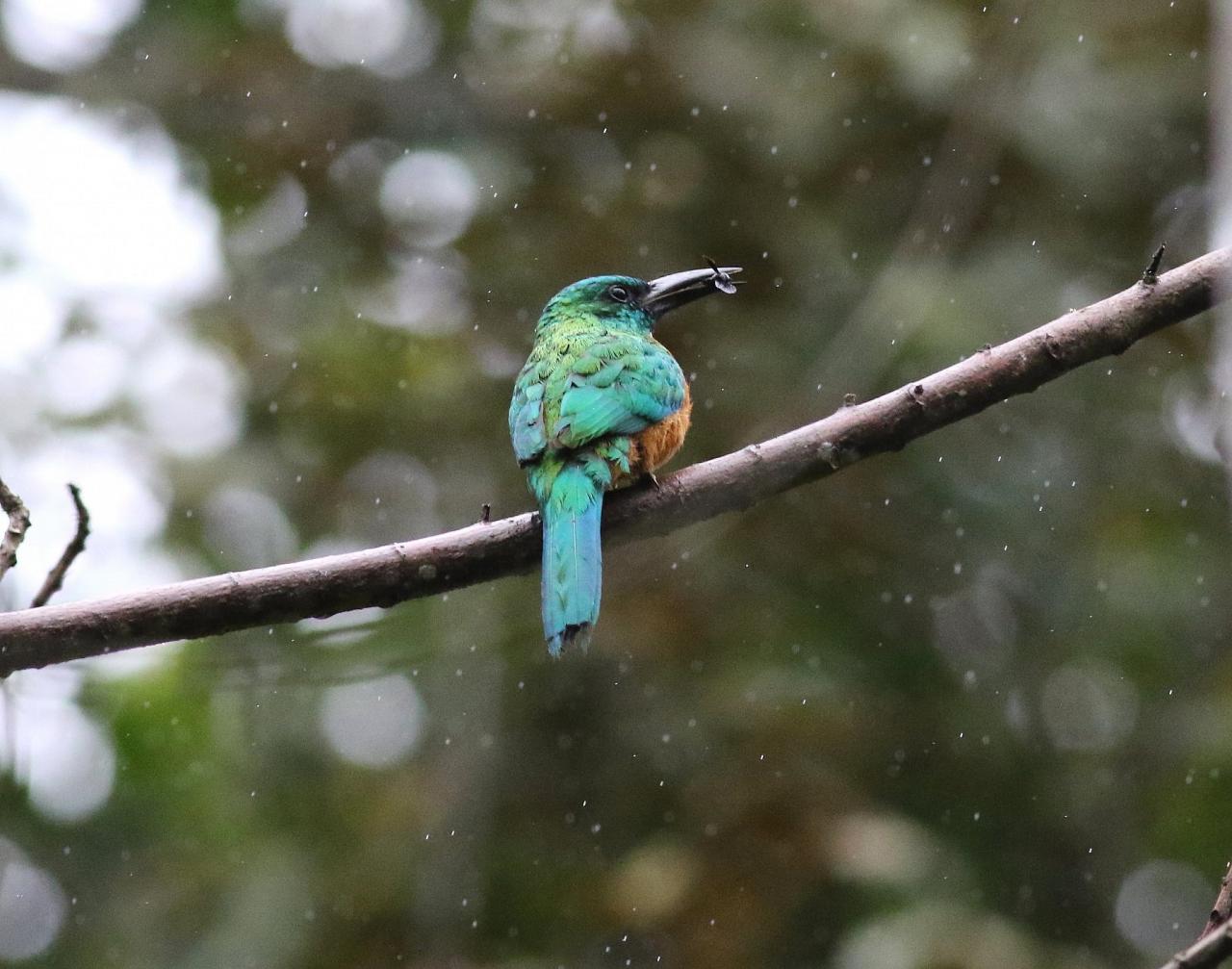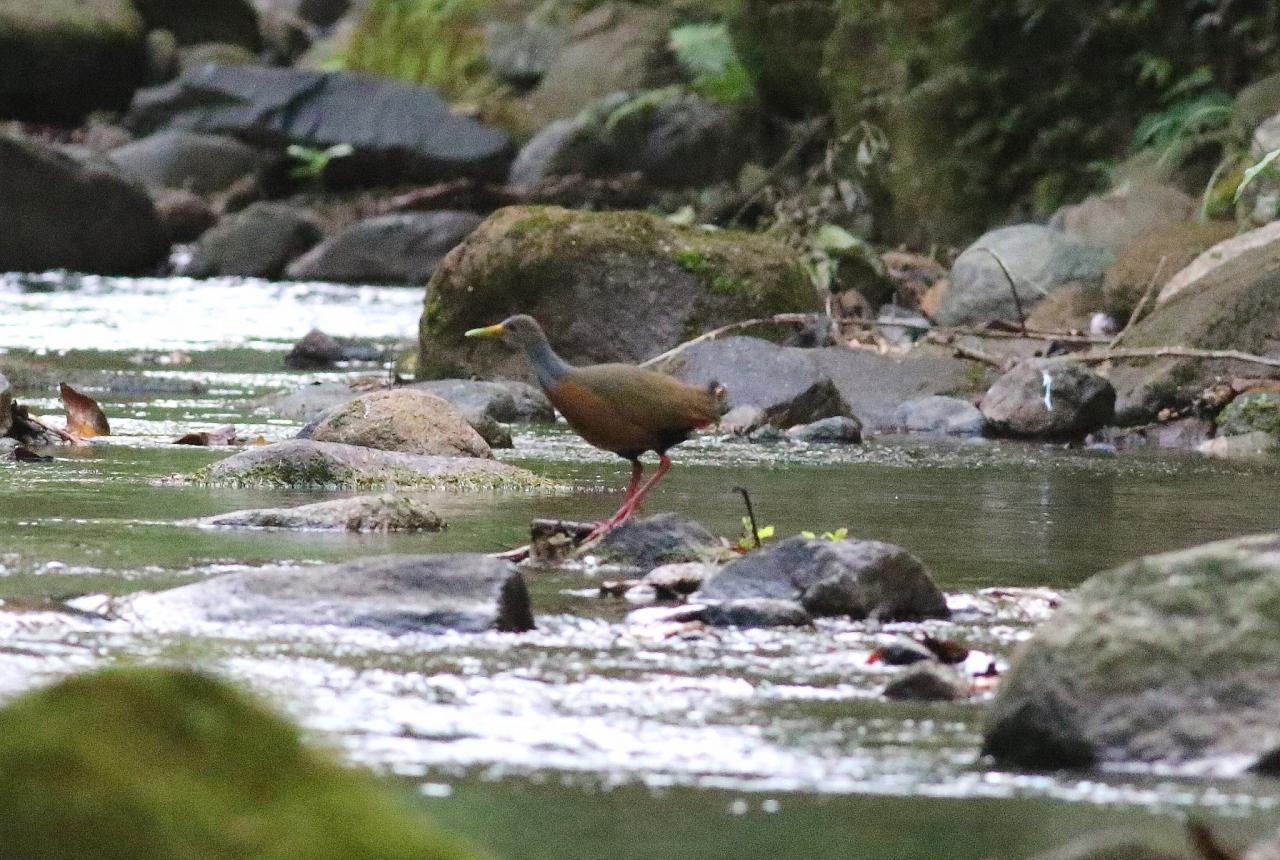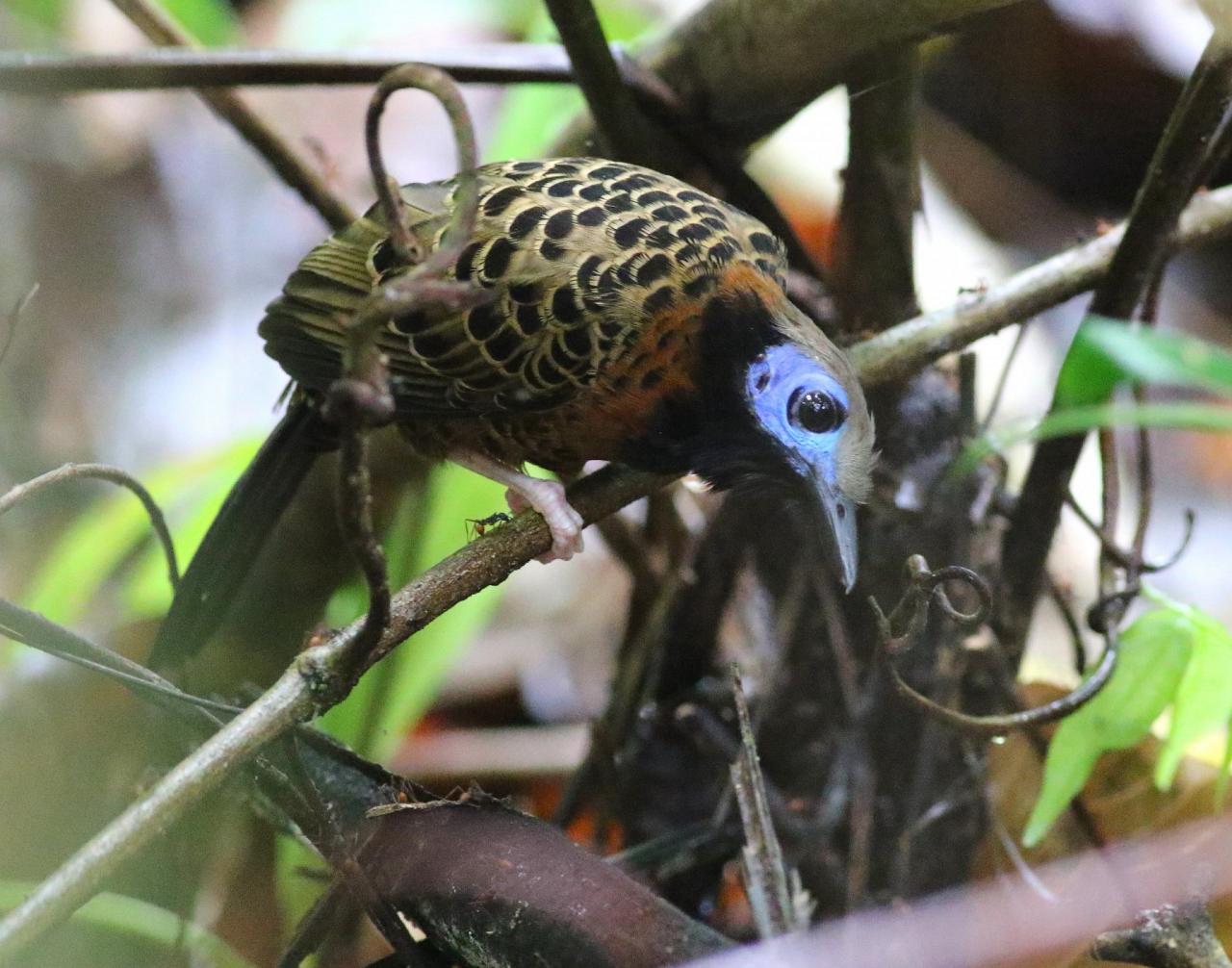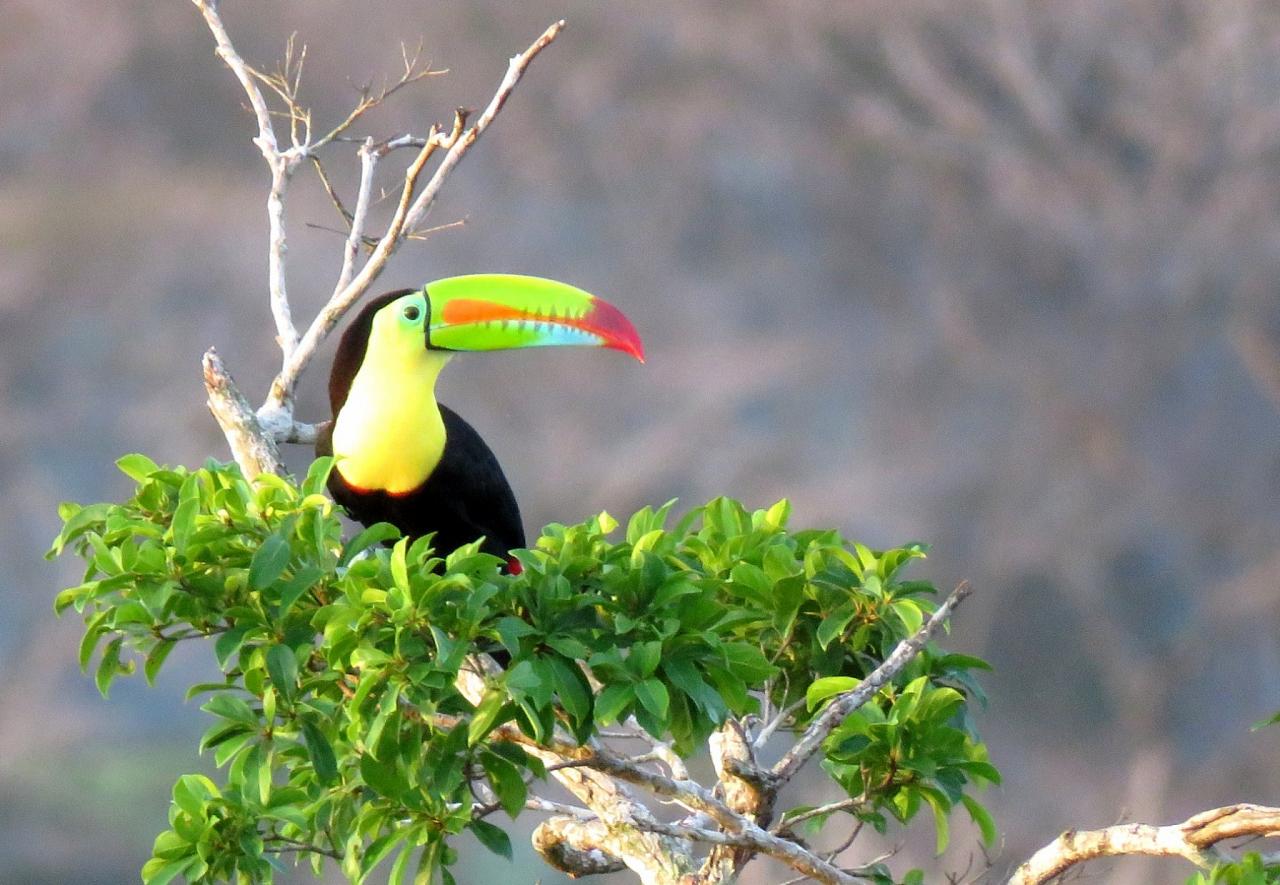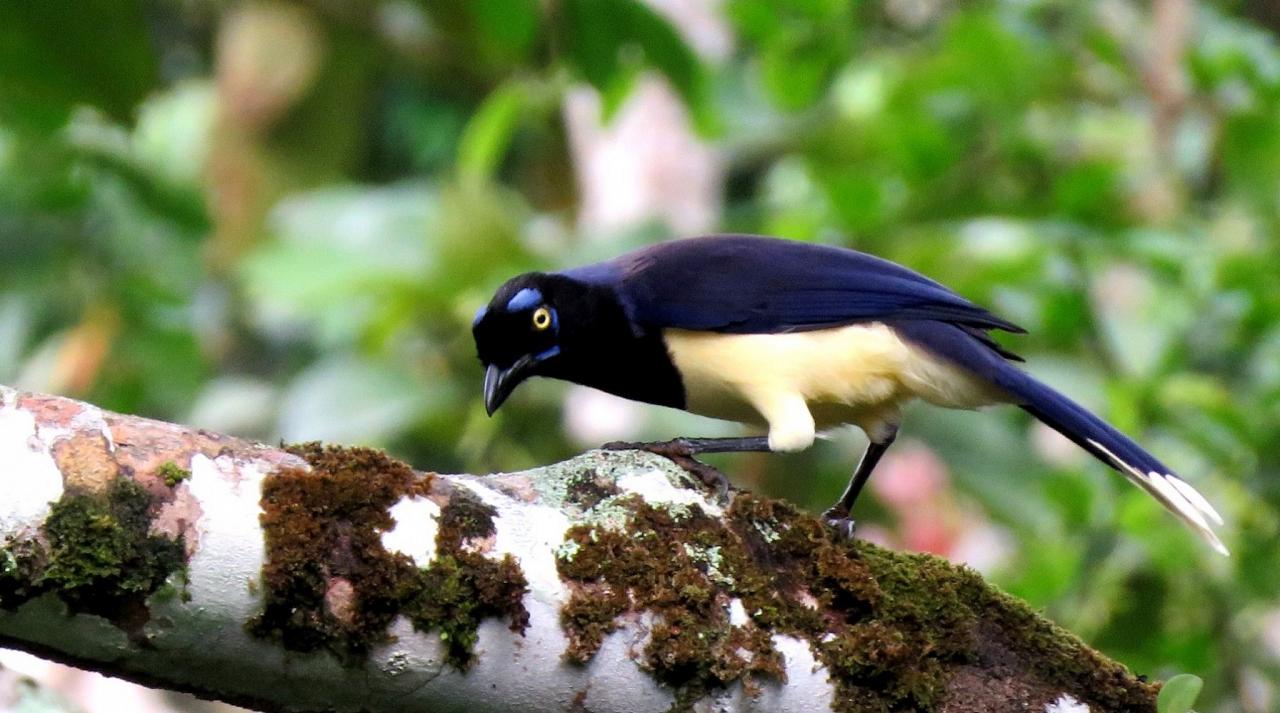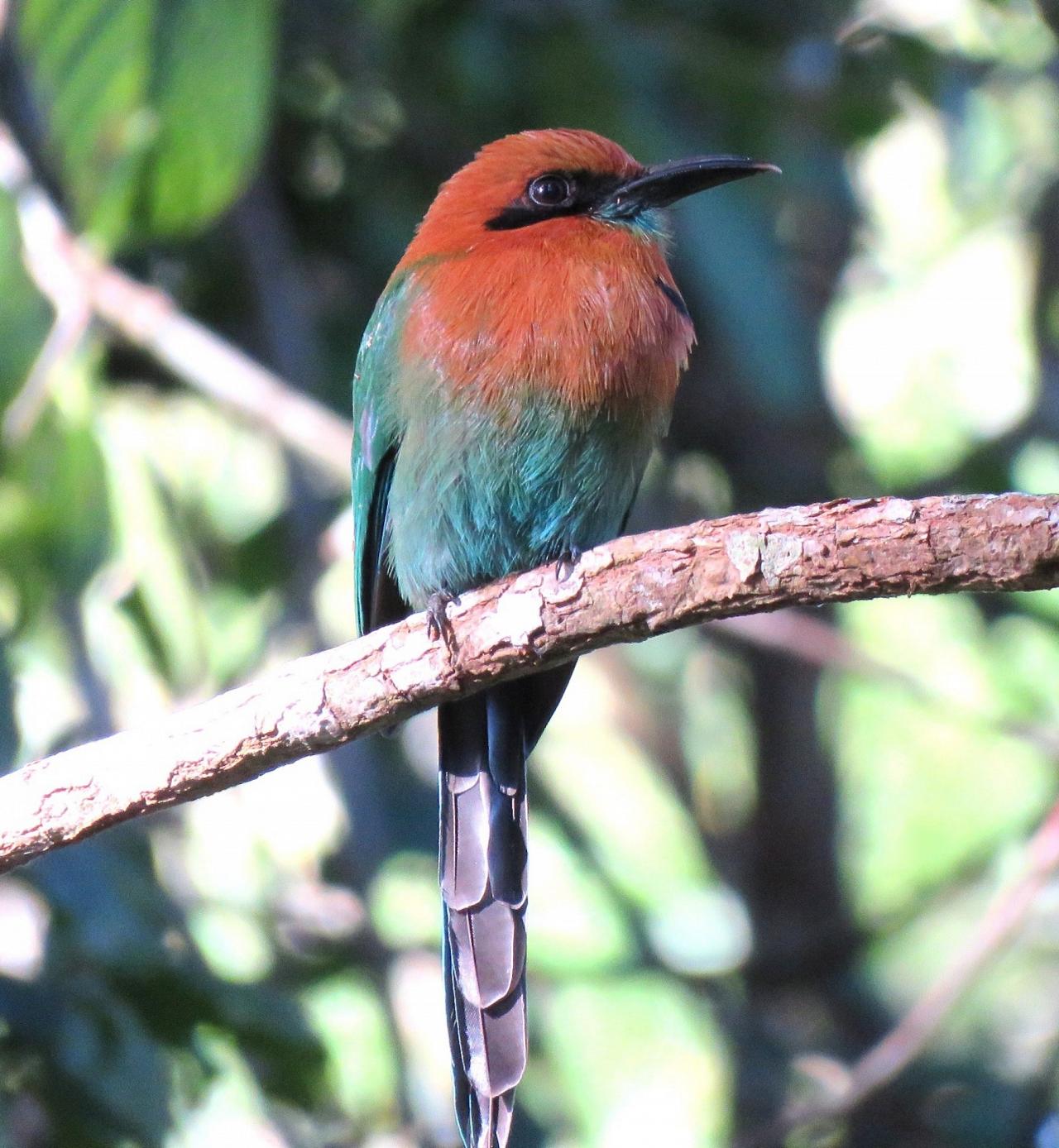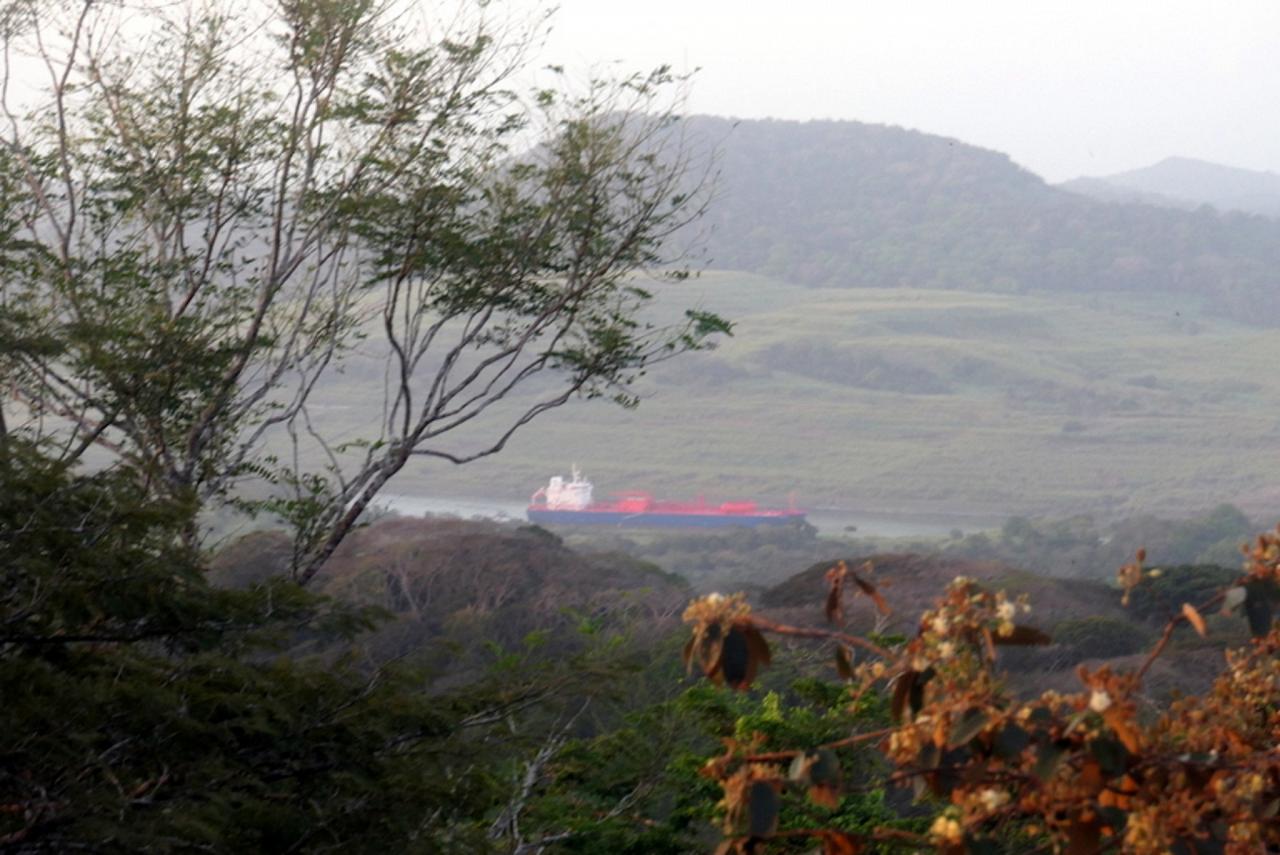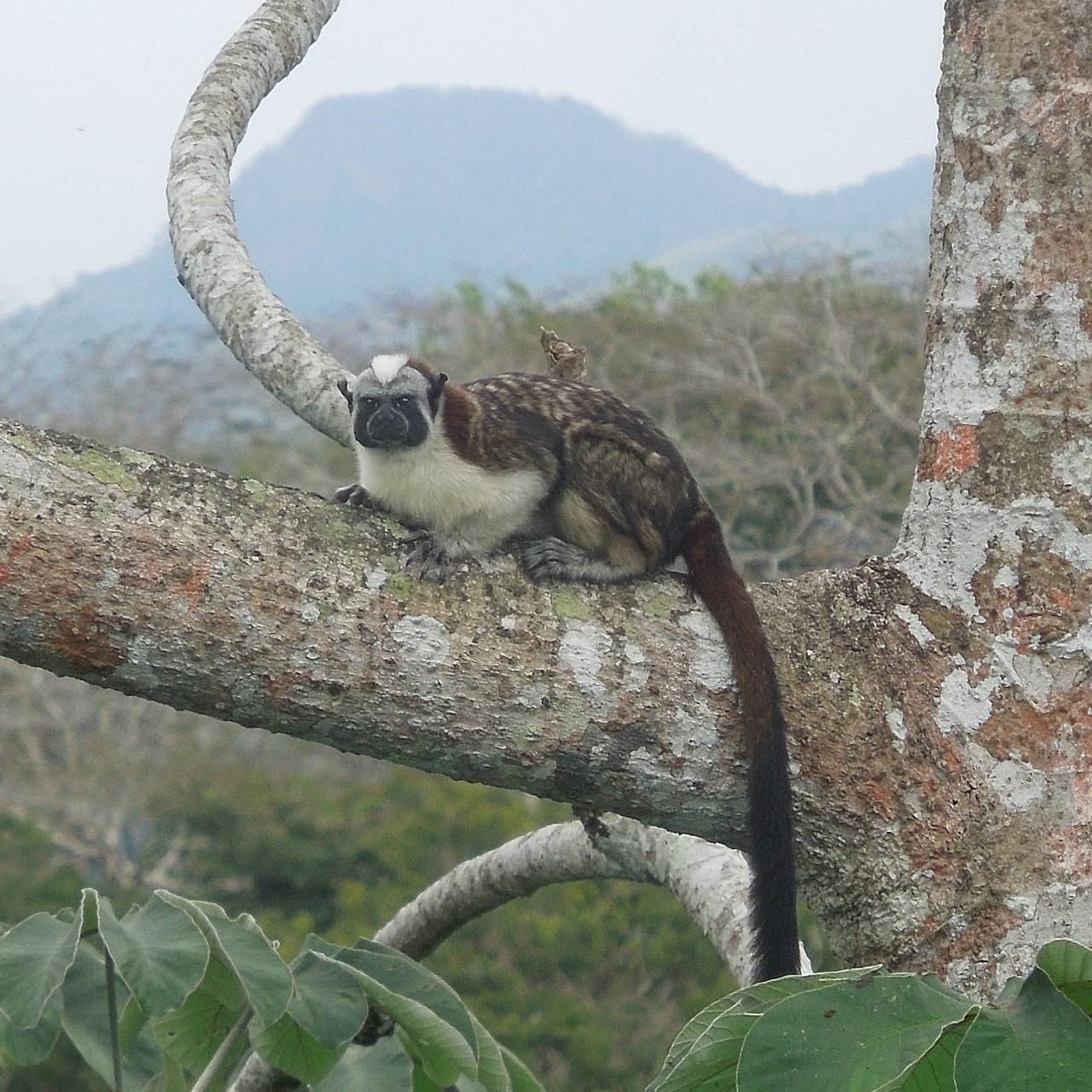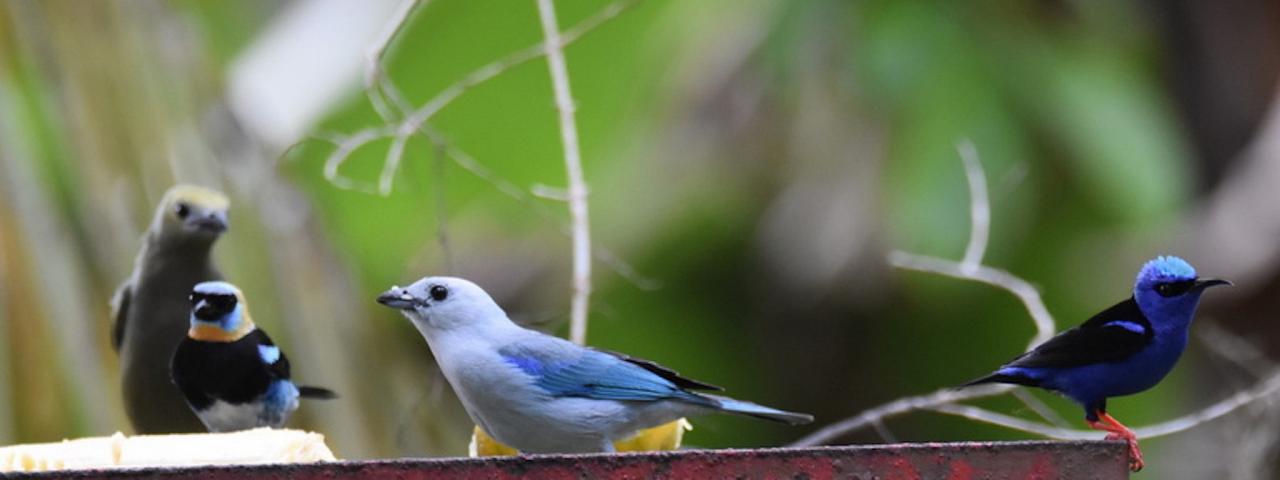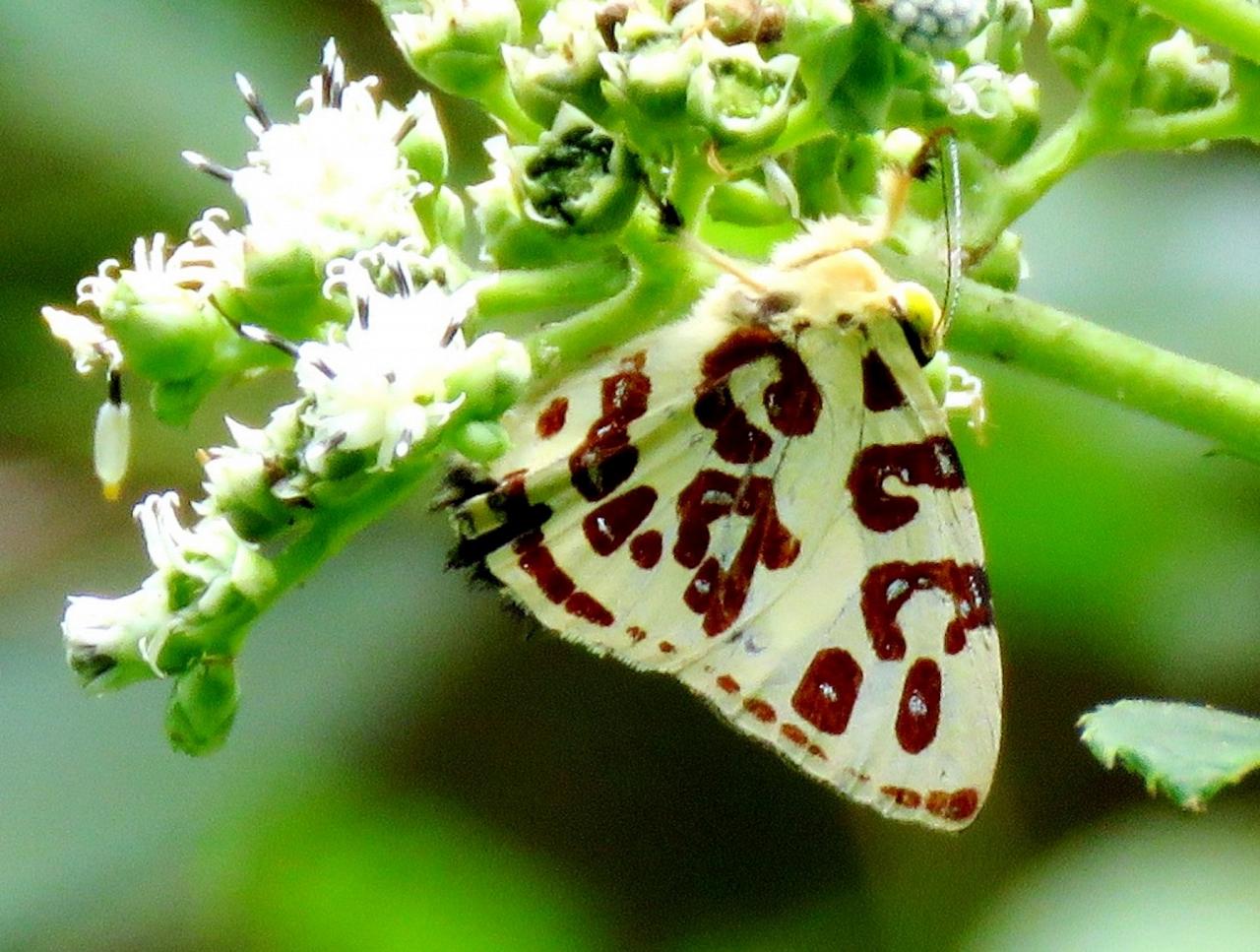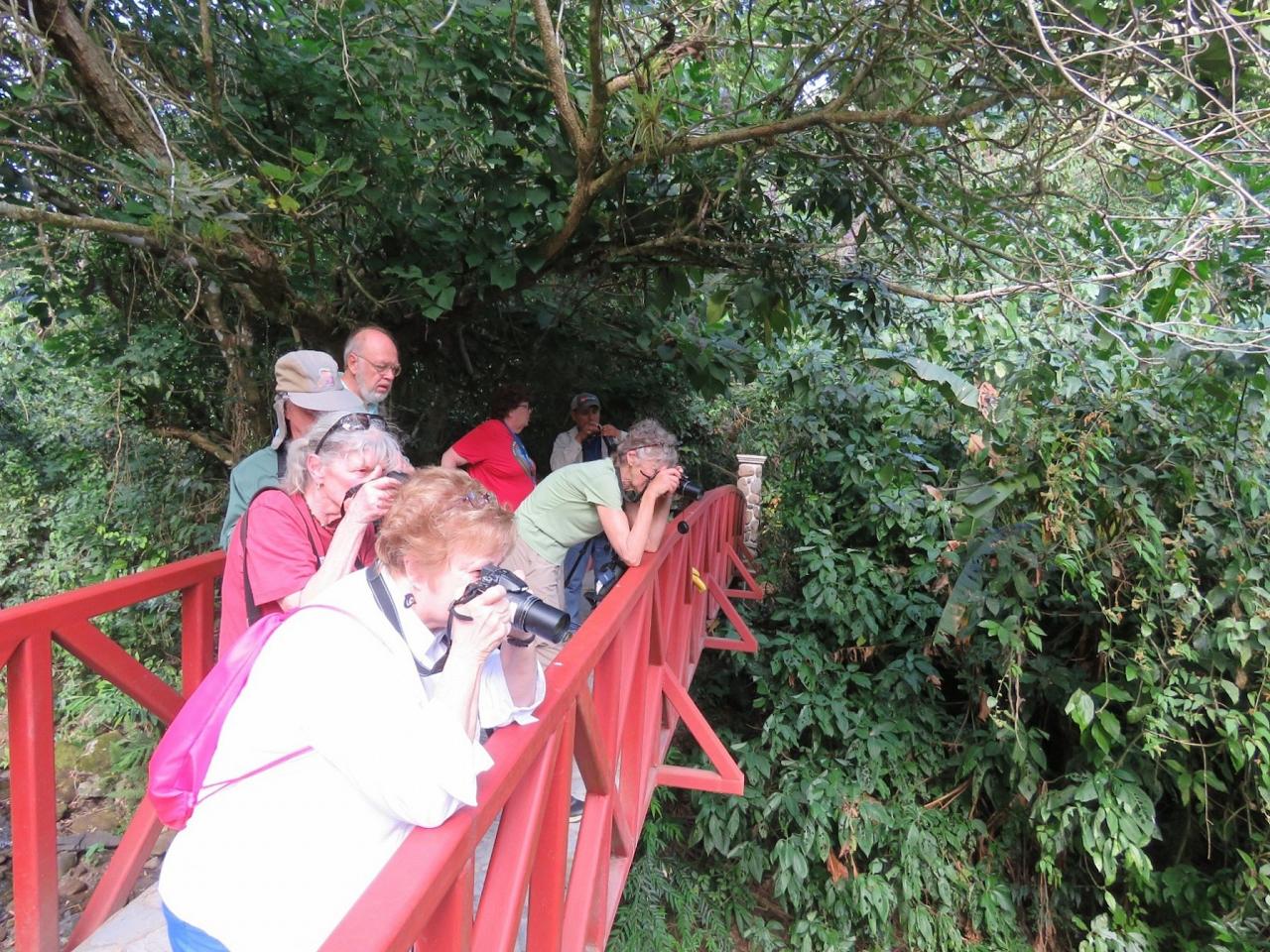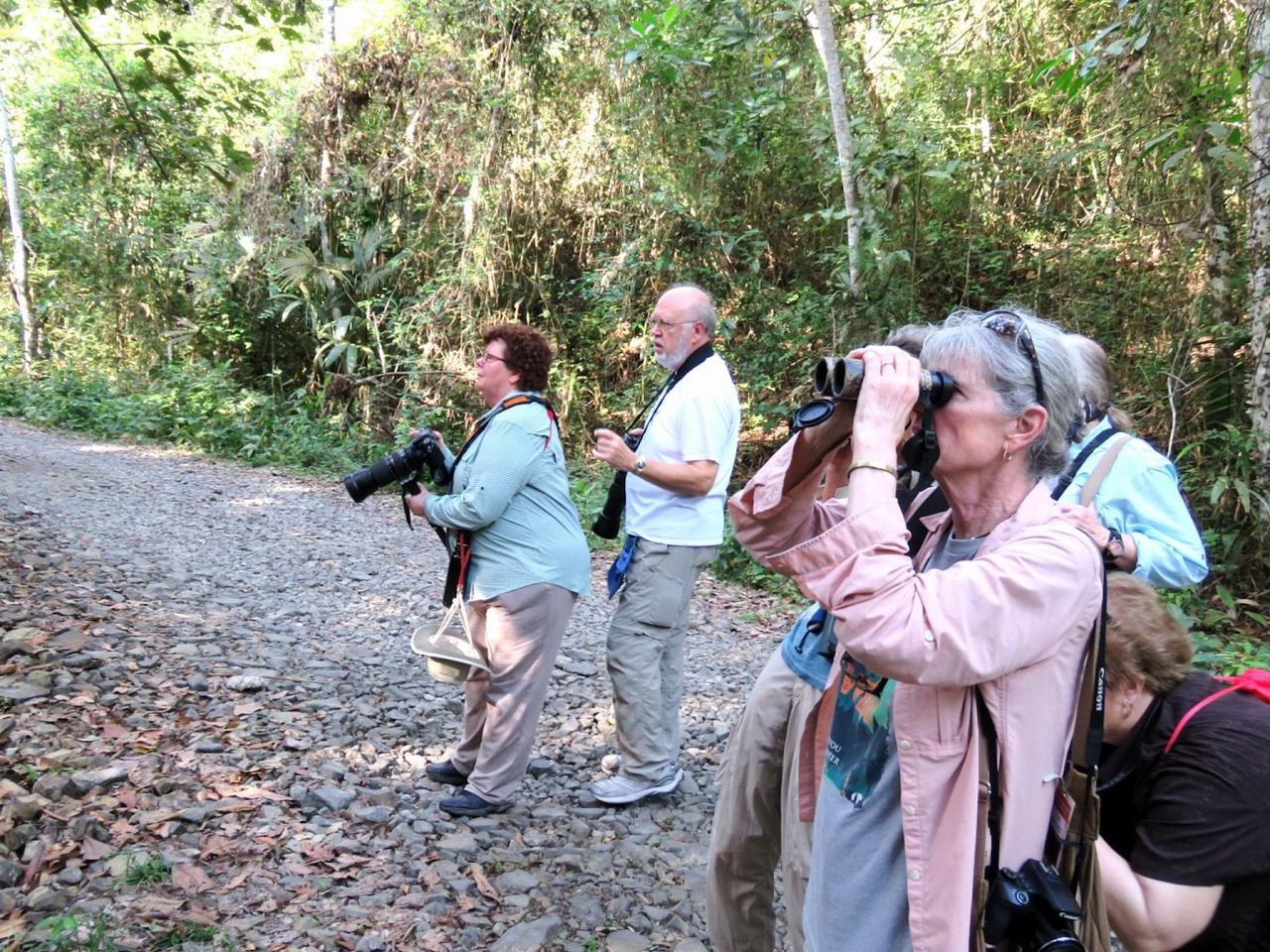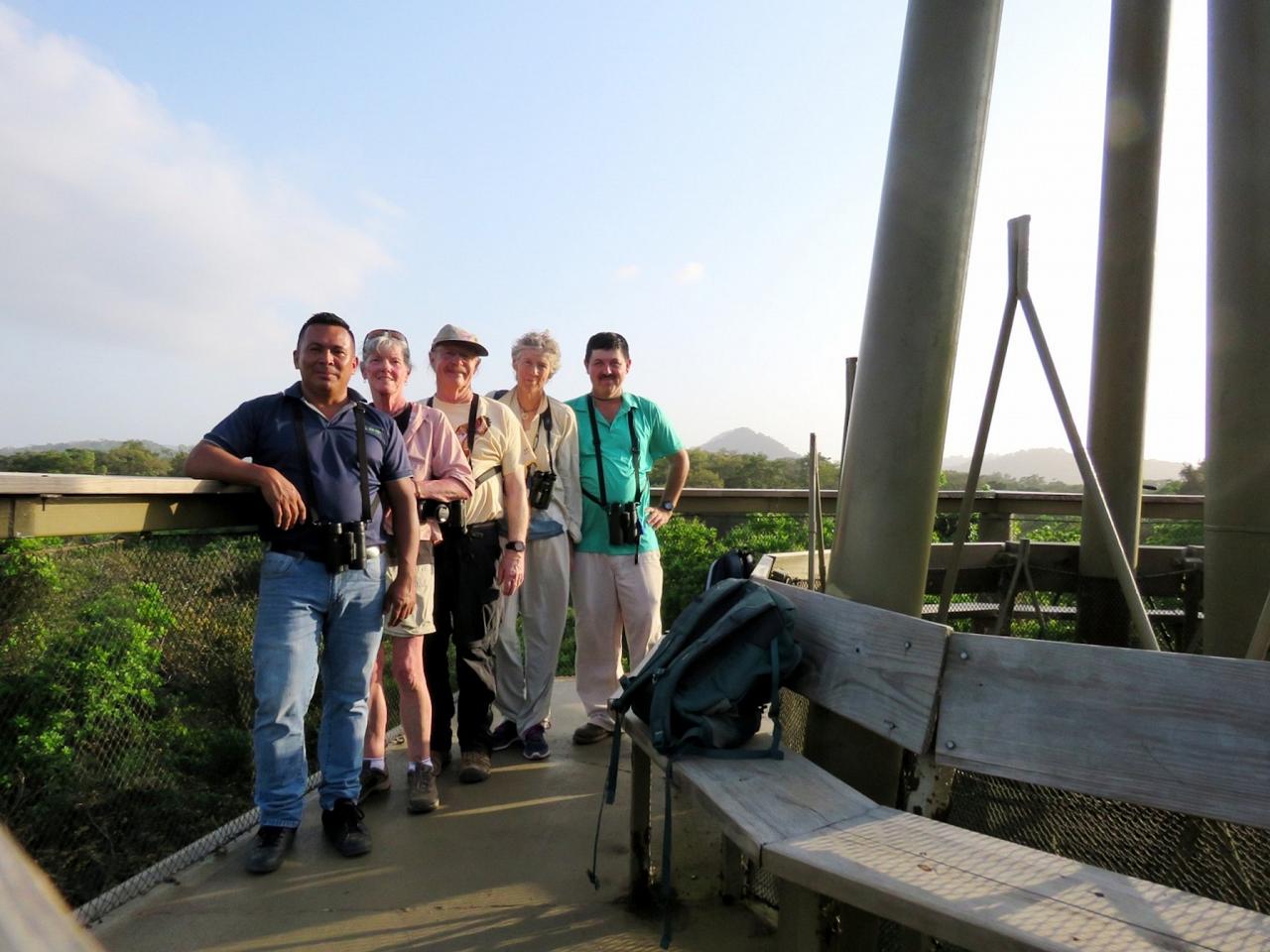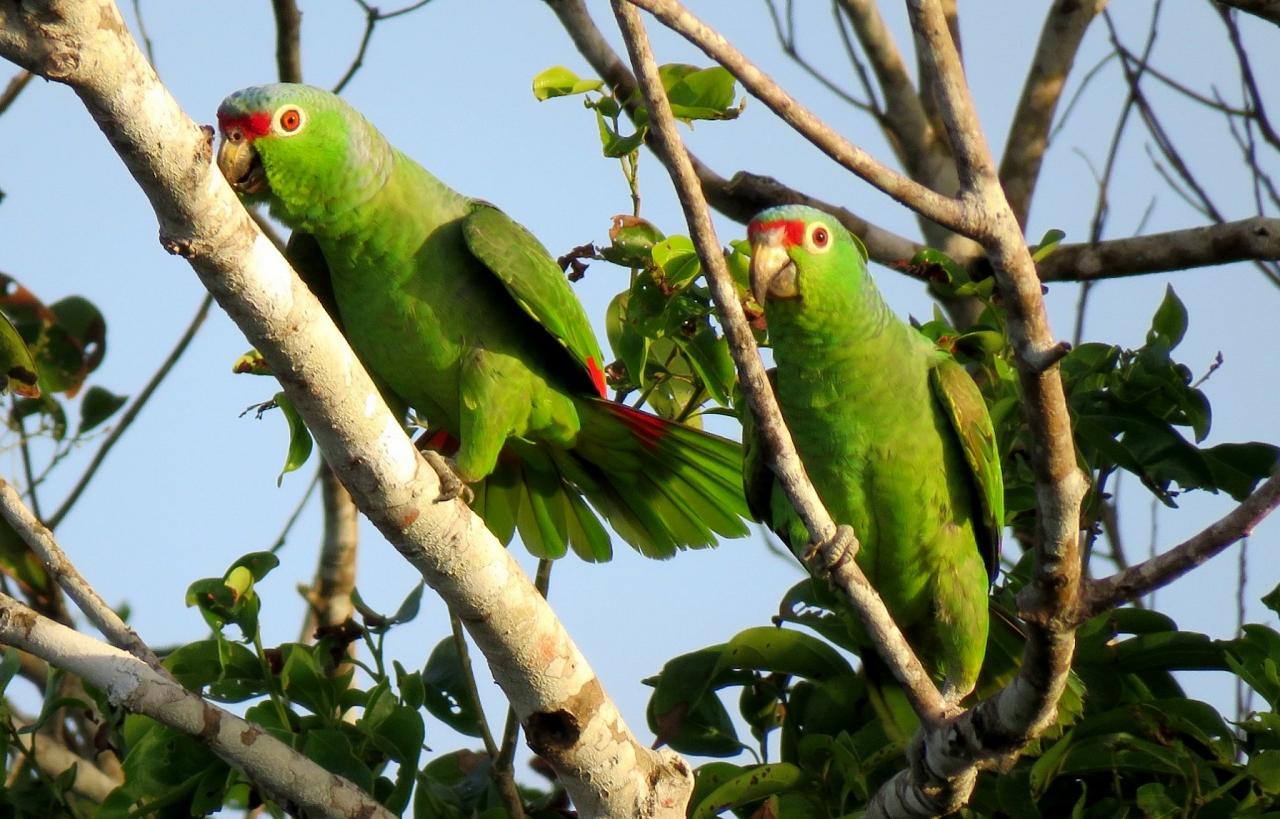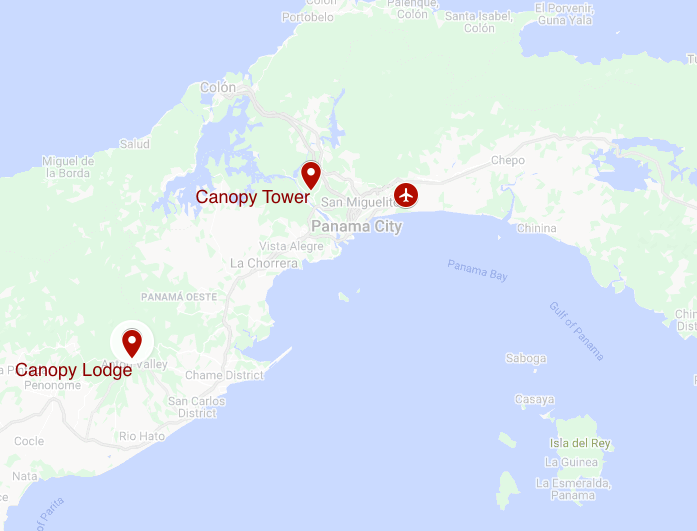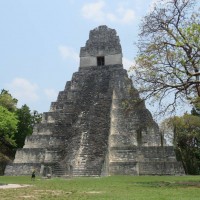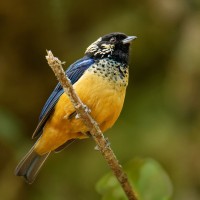- Overview
- Full Itinerary
- Photo Gallery
- Costing
- Travel Details
- Trip Reports
- Guide
- Map
- Know Before You Go
- Other Trips You May Like
Discover Panama’s unrivaled birding, with a rich variety of mammals, amphibians, insects, and plants, and unique habitats—from rushing mountain streams to lush lowland rainforest and Canal-side jungle—on this Naturalist Journeys Panama birding and nature tour.
Live among the birds at Canopy Tower in Soberanía National Park, a repurposed radar tower ideally situated in a pristine portion of Panama’s lush lowland rainforest. The canopy-level dining area offers views of monkeys, toucans, sloths, mixed flocks, and more, right at eye level! There is also an upper deck, where you can take your morning coffee (or afternoon cocktail), for a 360° vista of the forest and a view of the Panama Canal. Early mornings on the top deck boast great views of raptors and parrots taking flight for the day.
Then venture off to the mountains, to enjoy one of the nicest eco-lodges in the Neotropics: the Canopy Lodge. Awaken to bird calls in the cool mountain air, with wisps of cloud forest fog creeping over the property’s flowing stream. With coffee in hand, view aracaris, motmots, oropendolas, honeycreepers, and warblers at feeders before breakfast. There are trails above and below the lodge that let us explore El Valle de Antón in detail.
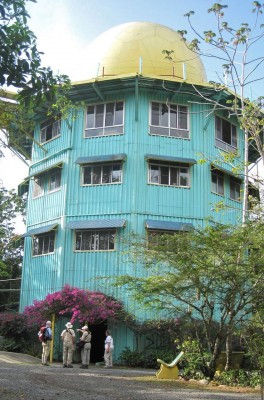
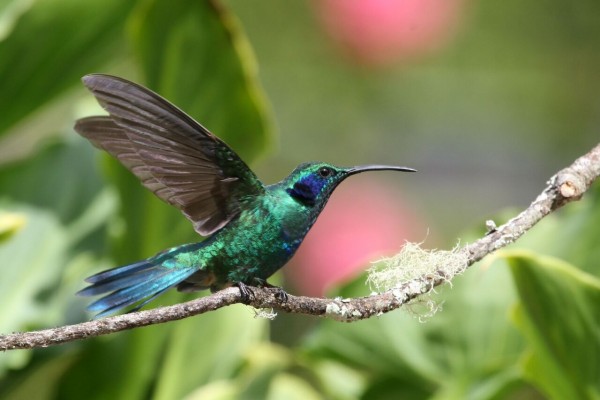
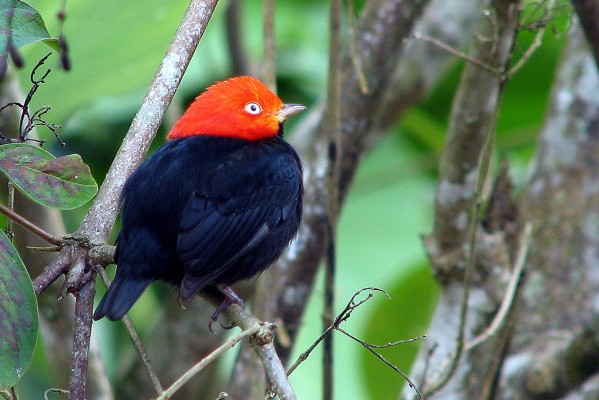
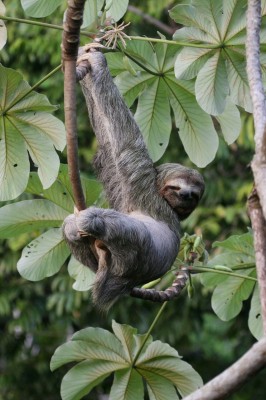
Tour Highlights
- Tally a great list of birds, butterflies, frogs, and mammals with expert guides
- Immerse yourself in wildlife—on a walk, or from your balcony or hammock ...
- See and learn about the fascinating dynamics of a Neotropical rainforest
- Cross Gatun Lake to explore the Panama Canal by boat
- Find antbirds, Pheasant Cuckoo, and other secretive species along Panama’s famous Pipeline Road
- Observe Geoffroy’s Tamarin and Mantled Howler Monkey eye-to-eye
- Bird in style from Canopy Tower’s open-air “Birdmobile”—yes!
- Venture out on a nighttime birding excursion to see Spectacled Owl, Kinkajou, large insects, and more
- Visit a colorful market for souvenirs and a conservation facility to see rare frogs
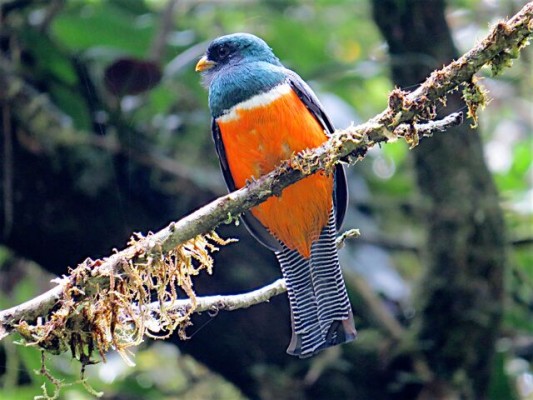
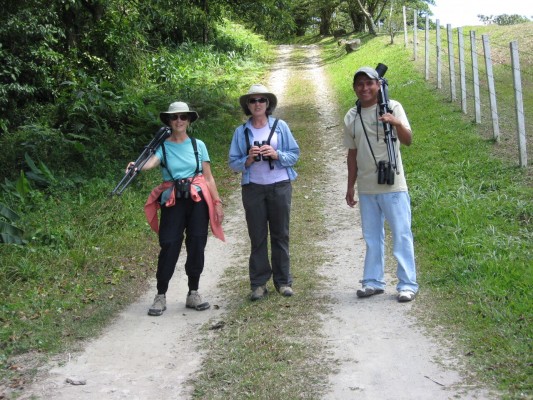
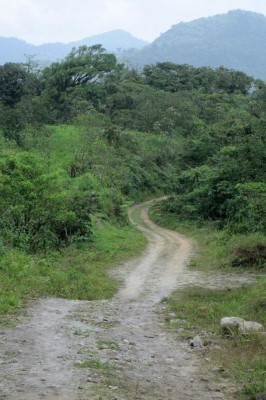
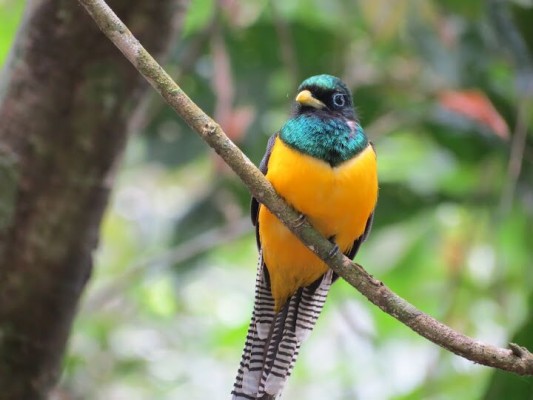
Trip Itinerary
Itineraries are guidelines; variations in itinerary may occur to account for weather, road conditions, closures, etc. and to maximize your experience.
Sat., Apr. 4 Arrivals in Panama City | Travel to the Canopy Tower
Welcome to Panama! On arrival today, you are met at the airport and transfered to Canopy Tower. Our route passes through modern Panama City and then parallels the Canal; watch ships pass by as we drive. Nature starts to prevail in lush forests that line the road as we turn up Semaphore Hill and the road to our lodgings at the Canopy Tower.
Over the next few days, the Canal is ever present, providing a great opportunity to understand its operations (past and contemporary), recent expansion, and role in Panama’s economy.
On arrival, we can walk down the hill for our first bird sightings. Lush forests line the road to the Tower—we never know what we may find! Black-breasted Puffbird, Double-toothed Kite, Black-tailed or other trogons, secretive antbirds or wrens, Geoffroy’s Tamarin, and more are possible. This is a leisurely walk downhill, and the lodge’s open-air vehicle awaits us at the bottom to take us back to the Tower. If you wish, opt out of this first walk and simply enjoy watching hummingbirds vie for nectar at the feeders near the lodge.
We then settle into one of the most unusual eco-lodges, and before a delicious dinner we may gather on the observation deck to watch the sunset and ships passing through the Panama Canal—spectacular!
Accommodations at Canopy Tower (B,L,D)
Sun., Apr. 5 Soberanía National Park | Pipeline Road | Ammo Dump Pond
Soberanía National Park is considered one of Central America’s most spectacular and accessible areas for bird watching and wildlife observation. Only 45 minutes from Panama City, Soberanía's 55,000 acres boast some 525 species of birds, 105 species of mammals (including large cats), Tamandua (a type of anteater), both Two and Three-toed Sloths, four species of monkeys, Central American Agouti, and 59 endemic plant species that inhabit four life zones. We depart early to get out on Pipeline Road when bird activity is most lively.
A walk along the world-renowned Pipeline Road is unforgettable, a prized destination among birdwatchers and nature enthusiasts. During World War II, a pipeline was built along the Panama Canal to transport fuel from one ocean to the other in the event the waterway was attacked. Fortunately, it was never used. The road, not open to traffic, provides a lush, easy pathway for us to explore. This is the site where the Audubon Society held its world record Christmas Bird Count for 19 years straight, identifying 357 species of birds in a 24 hour period. This morning we look for secretive antbirds such as White-flanked and Pygmy Antwrens, and other rainforest birds such as Great Jacamar, Broad-billed Motmot, Blue-crowned and Golden-collared Manakins, Pheasant Cuckoo, Brown Twistwing, and some of the rarer forest raptors. We likely encounter the tropical phenomenon of the mixed flock—a veritable explosion of birds that work and feed together, exhibiting complex social structure that scientists are only beginning to understand. Insect watchers may find iridescent beetles, beautiful clearwing butterflies, colorful grasshoppers, or even the world’s largest damselfly.
We return to the Tower for lunch and a mid-day break, then venture out to the very productive Ammo Dump Pond, where we hope to find Northern Jacana, Rufescent Tiger-Heron, Black-bellied Whistling-Duck, Yellow-tailed Oriole, Lesser Kiskadee, possibly Pygmy Kingfisher, and other interesting species.
Accommodations at Canopy Tower (B,L,D)
Mon., Apr. 6 Panama Canal Rainforest Boat Adventure | Gamboa History | Summit Ponds
This morning you can sleep in a bit … if you are able to over the sounds of the forest just outside your door! Others may want to watch the sunrise with a good cup of Panamanian coffee from the observation deck.
After breakfast, we explore the waters of the Panama Canal on small boats, quietly moving through coves and inlets in search of wildlife, including Greater Ani, Snail Kite, other raptors, and possibly whistling-ducks, reptiles such as Spectacled Caiman and Green Iguana, and both Mantled Howler and White-faced Capuchin Monkeys. We find this to be the most comfortable and accessible way to discover the natural attributes of the Panama Canal watershed. We have the freedom to explore Gatun Lake in detail, passing by gigantic cargo ships transiting the waterway. Along the way, we should spot Three-toed Sloth resting on tree branches, while Osprey are vocal and on the prowl for Peacock Bass. Limpkin, Anhinga, and Keel-billed Toucan are some of the birds we may encounter.
This is also a great place to focus on some history. At the time of its creation, Gatun Lake was the largest man-made lake in the world. The flow of all the rivers within the Panama Canal Watershed is contained in Gatun Lake to provide water for the operation of the lock system. More than 52-million gallons of fresh water are used for every ship that transits through the Panama Canal from one ocean to another.
In 1902 (33 years after the Suez Canal was opened), after years of negotiation and a disastrous attempt by the French to build the canal, the U.S. Congress authorized construction of the Panama Canal. The project was put on hold, however, when Colombia, which controlled Panama at the time, rejected the authorizing treaty. It was only in 1904, after Panama’s independence, that construction began. Ten years later, ahead of time and under budget, the Canal was opened to bridge the world. Imagine that first historic passage!
The year 2000 marked the end of the U.S. treaty (which had actually been revised several times) and Panama now assumes responsibility for operation of the Canal. In 2016, a third lock opened to accommodate increased traffic and larger ships. From our boats on Gatun Lake you can see the Titan Crane and learn more about the history of the town of Gamboa, which is still the Canal’s dredging operations center.
Mid-afternoon we visit Summit Ponds, a wonderful, leisurely birding area where even in the quiet time of afternoon we may find trogons, motmots, and a host of interesting species. Here, we are at the edge of open and forested areas, and good numbers of migrant warblers join resident Neotropical species, making it a very rewarding stop. The ponds themselves often provide us with nesting Boat-billed Heron, a nocturnal species that can be otherwise difficult to find.
We return to enjoy happy hour, dinner, and evening at the Tower.
Accommodations at Canopy Tower (B,L,D)
Tues., Apr. 7 Discovery Tower | Pipeline Road
Today we return to nearby Pipeline Road, but this time we go very early to ascend the Discovery Tower for a special sunrise-viewing of birds high in the canopy. The views are incredible, and of note are parrots, raptors, and other species flying by as they leave their night roosts. Hummingbirds are busy in the canopy flowers, and we may find elusive puffbirds, woodpeckers, tanagers, and, with luck, the dazzling Blue Cotinga.
We come back to the Discovery Center display area for coffee and a chance to watch the hummingbird feeders. One year we found Night Monkeys peering out of their roost tree here, such a delight! We can walk another trail or part of the road after our coffee; the Pipeline area is so rich that there are always new species to observe. Black-tailed Trogon can be seen here, as well as the secretive Streak-chested Antpitta, Black-faced Antthrush, noisy Bright-rumped Attila, Red-capped Manakin, and Northern Schiffornis. We don’t want to miss any of them!
We return for lunch and a siesta, then in the afternoon we do some leisurely birding along the Chagres River and in the residential area of Gamboa, below Gamboa Rainforest Lodge, where lush plantings attract many species, from toucans to agoutis to colorful tanagers and more. Golden-fronted Greenlet, Cinnamon Becard, Golden-collared Manakin, Buff-breasted Wren, and Gray-headed Tanager are all possible in this area.
One of our evenings at the Tower we enjoy an outdoor barbecue and a night drive on which we look for Spectacled Owl and mammals like Allen’s Olingo, Woolly Opossum, and Kinkajou, which are often feeding on fruits and flowers. It’s a lot of fun to be under the immense canopy of rainforest trees as the night shift of wildlife gets active. Our skilled Tower guides are specialists in finding these mysterious jungle residents!
This is our last evening at the Tower and we gather on the observation deck for sunset and the sight of birds returning to roosts ahead of dinner.
Accommodations at the Canopy Tower (B,L,D)
Wed., Apr. 8 Plantation Road | Canopy Lodge
This morning we enjoy an early walk on Plantation Road in a bit more open forest than we experienced on Pipeline Road. This is another good area to encounter mammals and we often find confiding trogons and motmots here, too, as well as some mixed flocks. Orange-billed Sparrow inhabit this more open forest floor, as do Scaly-throated Leaftosser, Song Wren, Chestnut-backed Antbird, and many flycatchers.
Plantation Road is close to our lodge, so those who prefer a leisurely morning can stay back and relax. By mid-morning we pack up and drive north to the other fabulous property operated by the Canopy Family—the Canopy Lodge near El Valle in the central mountains.
On arrival at Canopy Lodge, we find ourselves immersed in the beauty of mountain terrain where nature is active all around us. We quickly find a host of hummingbirds, tanagers, and oropendolas at feeders adjacent to the open-air dining area. We have close up views of tanagers: Flame-rumped, Crimson-backed, White-lined, and Blue-gray, as well as electric Red-legged Honeycreeper. Clay-colored Thrush, Streaked Saltator, and Yellow-faced Grassquit provide us with activity throughout our stay. Sometimes more secretive species such as Rufous Motmot or Orange-billed Sparrow emerge from the vegetation near the lodge!
We meet our local guides who are eager to share bird specialties on the forest trails leading from the Lodge. Occasionally, two often-difficult to see Neotropical species can be found here: Tody Motmot and Rufous-vented Ground-Cuckoo. Basilisk Lizard sun themselves on rocks along the stream, while Broad-billed and Rufous Motmots, Chestnut-backed Antbird, and the less common Dull-mantled Antbird are often present along the trail, and occasionally, we see the bizarre White-tipped Sicklebill. This area is good for seeing Neotropical wintering migrants, such as Prothonotary and Canada Warblers. We hope in time to get views of the elusive Sunbittern that feeds along the stream that flows by the Lodge, too.
We relax and settle in. The food here is wonderful, as is the atmosphere for tonight’s meal. Enjoy!
Accommodations at the Canopy Lodge (B,L,D)
Thurs., Apr. 9 Cara Iguana | Rare Frog Conservation Facility | Canopy Lodge
There are so many wonderful places to bird right near the Canopy Lodge. Today we choose according to what species the guides are finding, and where. The secretive Tody Motmot is one option, often found on a road we like to walk along above a lovely residential district near town.
We do want to visit a facility for endangered frog research and propagation, housed at El Nispero, a small zoo in El Valle with a wide selection of native animals and birds, mostly in good-sized cages. Some of you may already be familiar with the frog facility as it has been featured in a documentary on Public Television. In addition to learning about the many forms of frogs and the challenges they face, we spend some time birding here, too. The grounds are landscaped with artificial streams and the backdrop is the most dramatic of El Valle's hills. It's a pleasant place to spend an hour wandering around. The secretive Rosy Thrush-Tanager is one bird we look for here, a lovely songster with black and raspberry-colored plumage! We also take time to visit the charming local farmers’ market in El Valle where colorful vegetables and artisan crafts are found. This is a great chance to purchase any local souvenirs or gifts to take home.
Accommodations at Canopy Lodge (B,L,D)
Fri., Apr. 10 Exploring the Mountains at La Mesa & Las Minas Road
This morning we venture to higher elevation to watch birds near what might be the world’s most beautiful chicken farm. Walking into the forest, we have a chance to see some of the more secretive species, including mixed flocks of antwrens, Black-crowned Antpitta, and another chance for White-tipped Sicklebill.
Our plan is to walk atop La Mesa on Las Minas Road where we search for foothill species and hope to see one of our favorites: the comical Northern Emerald-Toucanet. In lush clusters of bromeliads that festoon the trees, we encounter Ochraceous Wren and Gray-breasted Wood-Wren; on tree trunks we search for both Plain-brown and Spotted Woodcreepers, and we listen for Red-faced Spinetail, which may sing out from roadside trees. Both White-throated and Pale-vented Thrushes can be found along our route, as well as mixed groups of beautiful tanagers like Silver-throated. Masked Tityra often call from treetops at the road’s edge and Black-headed Saltator, Tawny-capped and White-vented Euphonias, and Spot-crowned Barbet have been seen at local feeders! Those who prefer hiking to birding can simply walk farther along this scenic mountain road, returning to join us at a specified time.
We return to the lodge for lunch and a break. Relax on your porch, browse books in the open-air library, or wander the grounds where Stripe-throated Hermit, and Violet-headed and Rufous-tailed Hummingbirds visit purple verbena flowers. You may even glimpse the rare Rufous-crested Coquette! We may hear the beautiful cascading notes of an Orange-billed Nightingale-Thrush or watch a mixed flock come through, perhaps with a beautiful Bay-headed Tanager. Along a stream that runs through the property we watch for Green Kingfisher, possible Sunbittern, Buff-rumped Warbler, and a host of colorful butterflies, including the brilliant Blue Morpho. A Three-toed Sloth may be seen draped lazily across an open branch or peeking out from behind the large leaves of a Cecropia tree.
On our last afternoon, we take a leisurely walk up the road or on trails right from the lodge. Our local guides know where to find the best and most current sightings. Trees surrounding the lodge serve as perches for a good diversity of flycatchers, including Southern Beardless-Tyrannulet, Lesser and Yellow-bellied Elaenias, and Boat-billed, Social, and Piratic Flycatchers. During the dry season, raucous Chestnut-headed Oropendola nest in a colony in the tall Eucalyptus trees in the yard, while Giant Cowbird sometime show up looking for an unguarded nest in which to deposit an egg.
Birding along the road near the lodge, we have a good chance of hearing and seeing many species typical of the dry Pacific slope: Blue-crowned Motmot, Lance-tailed Manakin (difficult to see), Rosy Thrush-Tanager, and Red-throated Ant-Tanager. Humid foothill species are also present, including Orange-billed Nightingale-Thrush, and Dusky-faced and Tawny-crested Tanagers. Watch for larger species like the noisy Gray-headed Chachalaca, Keel-billed Toucan, Collared Aracari, and Black-chested Jay. It is also worthwhile to keep an eye on the sky, in case a White Hawk or Black Hawk-Eagle passes overhead.
This evening we have a wrap-up over happy hour to list our trip highlights, tally the species we’ve seen, and enjoy a celebratory dinner at the lodge.
Accommodations at Canopy Lodge (B,L,D)
Sat., Apr. 11 Departures from Panama City
We enjoy one last morning with nature as our alarm clock before heading off to the airport. Important! We have a three-hour return trip to the airport, so we ask that you book flights out after 3 PM. Those electing to leave earlier need to pay for a special transfer, with your start time set so that you have at least two hours at the airport. If you just can’t bear to leave yet, you can book additional days here and enjoy a field trip up to Altos Las Marias by 4WD, or simply relax.
Cost of the Journey
The cost of this journey is per person, based on occupancy: $5190 DBL / $5190 SGL*, from Panama City. Tour cost includes all accommodations; meals as specified in the itinerary, group airport transfers, professional guide services, local park and other area entrance fees, and miscellaneous program expenses.
*Limited to 3 single rooms with no single supplement. If you are a single but would like a double room or we have sold the 3 single rooms, the cost is an additional $159/night ($1113).
NEW! all tips other than your NJ guide (optional) and local guide are included (this includes tips for your driver, lodge and staff, day activities, meals and other services).
The cost of the journey does not include transportation to or from your home to Panama, or items of a personal nature such as laundry or beverages from the bar.
Travel Details
Please plan to make air travel plans only after the minimum group size has been met. We will send you a confirmation email as soon as the trip has been confirmed.
Arrival and Departure Airport: Tocumen International (PTY) in Panama City
Arrival Details: Plan flights to arrive April 4, no later than 12:00 PM. There are two transfers to Canopy Tower today. One is around 9:30 AM and the other is at 1:00 PM.
Departure Details: Plan flights to depart April 11, after 3:00 PM. The departure from Canopy Lodge is between 8 and 10 AM and it takes approximately 2.5 hours to reach the airport.
Travel Tips: If you arrive early, it's easy to book a room at the Riande Airport Hotel. They have a free airport shuttle as well as a restaurant and bar on site.
Entry Requirements: See "Essential Information" section under the "Know Before You Go” tab.
Browse below for trip reports and species lists from past versions of this and other tours from this destination.
Panama
- February 2011
- March 2012
- January 2013
- February 2015
- January 2018
- January 2019
- January 2020
- January 2020
- October 2021
Birds & Mammals
- February 2019
- February 2020
- April 2022
- March 2023
- March 2024
- March 2025
Darién
- February 2016
- March 2017
- July 2019
- July 2022
- July 2023
Green Season
- July 2012
- August 2014
- July 2019
- July 2024 (Three Lodge Tour)
- July 2025 (Three Lodge Tour)
Intro to Biodiversity
- October 2019
- October 2021
- September 2023
- September 2024
Tranquilo Bay
- January 2022
- April 2022
- October 2022
- January 2023
- March 2023
- April 2023
- October 2023
- January 2024
- February 2024
- March 2024
- April 2024
- October 2024
- November 2024
- January 2025
- February 2025
- March 2025
-
Chris Harbard
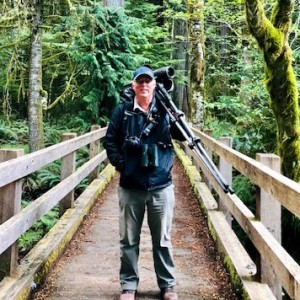
Chris Harbard is a well-known British ornithologist and conservationist who now lives in SE Arizona. After 24 years working with the world’s largest bird conservation organisation, the Royal Society for the Protection of Birds, he moved to the Austrian optics company Swarovski and managed their birdwatching website for several years. He is now a freelance author, editor, broadcaster and lecturer, as well as an occasional bird guide in SE Arizona where he and his wife help to run the Southwest Wings Birding and Nature Festival. He is on the board of the Arizona Field Ornithologists.
Chris writes for Birdwatch magazine and was editor of the Birdwatchers' Guides series of books. His own books include Birdwatch, Songbirds, A Birdwatcher's Quizbook, A First Guide to Birdwatching.
Working as a naturalist lecturer on board expedition cruise ships for the last eighteen years has taken him to remote areas of the Arctic, Antarctic, Atlantic and Pacific. Although his main area of interest is birds, especially seabirds, he also enjoys a range of other wildlife such as cetaceans, butterflies, dragonflies and plants.Other trips with Chris Harbard
-
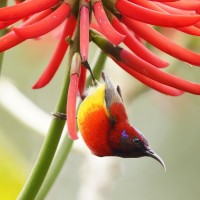 Southern India’s Western Ghats: Global Hotspot for Biodiversity FULL - Check out March Sri Lanka tour.November 7 - 21, 2025, w/Andaman Islands extension
Southern India’s Western Ghats: Global Hotspot for Biodiversity FULL - Check out March Sri Lanka tour.November 7 - 21, 2025, w/Andaman Islands extension -
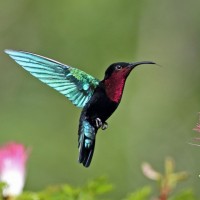 Lesser Antilles Endemics: A 3-Island Classic Only one space left!December 2 - 13, 2025
Lesser Antilles Endemics: A 3-Island Classic Only one space left!December 2 - 13, 2025 -
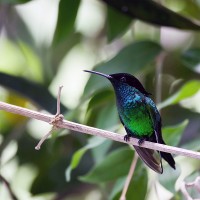 Caribbean Endemics of JamaicaJanuary 13 - 20, 2026
Caribbean Endemics of JamaicaJanuary 13 - 20, 2026 -
 Puerto Rico: Nature & Conservation A Private Tour for The Nature ConservancyMarch 23 - 29, 2026
Puerto Rico: Nature & Conservation A Private Tour for The Nature ConservancyMarch 23 - 29, 2026 -
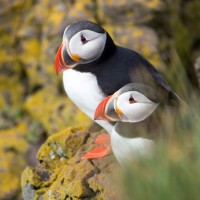 Scotland, Faroe Islands & Iceland Historic Trails & Wilderness CruiseMay 17 - 29, 2026
Scotland, Faroe Islands & Iceland Historic Trails & Wilderness CruiseMay 17 - 29, 2026 -
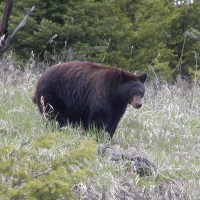 Yellowstone: Birds, Bears & WildlifeJune 11 - 17, 2026
Yellowstone: Birds, Bears & WildlifeJune 11 - 17, 2026 -
 Birding Canyon CountrySeptember 15 - 23, 2026
Birding Canyon CountrySeptember 15 - 23, 2026 -
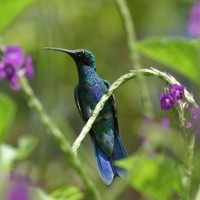 Ecuador: Biodiversity Across the Andes!November 3 - 16, 2026
Ecuador: Biodiversity Across the Andes!November 3 - 16, 2026 -
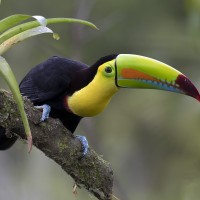 Christmas in Costa Rica December 22 - 29, 2026
Christmas in Costa Rica December 22 - 29, 2026
-
Essential Information +
Pace & Protocols +
Packing List +
Suggested Reading List +
Useful Links +
Photo credits: Banner: Geoffrey's Tamarin by Howard Topoff; Yellow-throated Toucan by Greg Smith; Black Howler Monkey by Peg Abbott; Crimson-backed Tanager by Sandy Sorkin; Southern Lapwing by Peg Abbott (PA); Canopy Tower, Naturalist Journeys Stock; Green Violetear, Naturalist Journeys Stock; Red-capped Manakin by Bob Behrstock; Three-toed Sloth by Peg Abbott; Orange-bellied Trogon by Howard Topoff; Birding Panama, Naturalist Journeys Stock; Panama Countryside, Naturalist Journeys Stock; Black-throated Trogon by Carla Bregman; Night Monkeys, Narca Moore-Craig (NMC); Panama Canal, Howard Topoff (HT); Black-throated Trogon, NJS; Geoffroy’s Tamarin, HT; Canopy Tower, Janice Petko (JP); Group Birding, PA; Orchid, NMC; Black-bellied Whistling-Ducks, PA; Snail Kite, PA; Keel-billed Toucan, Doug Greenberg; Boat-billed Herons, Tom Dove (TD); Red-capped Manakin, Bob Behrstock; Orange-collared Manakin, Bud Ferguson; Black-breasted Puffbird, PA; Canopy Lodge, JP; Northern Emerald-Toucanet, SS; Masked Tityra, PA; Sunbittern, SS; Tody Motmot, PA; Three-toed Sloth, Leon Moore; Blue-crowned Motmot, PA; Gray-headed Chachalaca, Greg Smith; Great Jacamar, James P. Smith (JS); Gray Cowled Wood Rail, JS; Ocellated Antbird, JS; Keel-billed Toucan, Robert Gallardo (RG); Black-chested Jay, RG; Broad-billed Motmot, RG; Canal Crossing, Janet Baker (JB); Group, RG; Geoffroy's Tamarin, Rick Cooper; Tanagers and Honeycreeper, JB; Giant Anteros, RG; Group on Bridge, RG; Group on Pipeline Road, RG; Group at Discovery Tower, RG; Red-lored Parrots, RG; Rufescent Tiger-Heron, RG.






